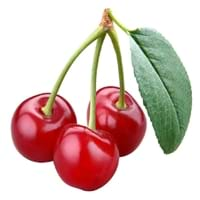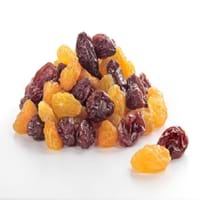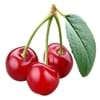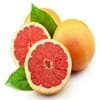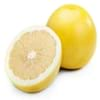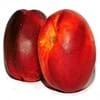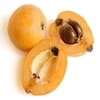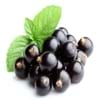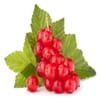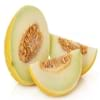Health Benefits
Arthritis prevention, Cancer prevention, Gout treatment, Regulation of heart rate, Treatment of osteoarthritis
Acidity treatment, Cancer prevention, Good for diabetics, Prevents constipation, Prevents Anaemia
General Benefits
Anti oxidant properties, Anti-inflammatory properties, Controls blood pressure, Cures headache, Digestive aid
Boosts immune system, Cures fever, Eye care, Fights against infections, Strengthens bones
Skin Benefits
Anti-aging benefits, Brightens and lightens complexion, Skin rejuvenation, Treatment of dark spots
Anti-aging benefits, Reduces wrinkles, Skin rejuvenation
Hair Benefits
Acts as moisturizer, Protects hair, Regulates hair growth, Rejuvenates scalp
Protects hair
Allergy Symptoms
Anaphylaxis, Breathing difficulty, Fainting, Itching, Nasal congestion, Nausea, Swelling of mouth, tongue or lips, Tingling sensation in mouth, Vomiting, Wheezing
Anaphylaxis, Asthma, Breathing difficulty, Coughing, Drop in blood pressure, Hives, Skin rash, Stuffy nose, Swelling of mouth, tongue or lips, Wheezing
Side Effects
Abdominal cramps, Allergic reaction, Bloating, Intestinal gas
Allergic reaction
Lactating Women
No
Not Available
Best Time to Eat
Best if taken as a breakfast (or empty stomach), As a snack in the late afternoon, Don't eat after meal, Morning time (before lunch)
Any time except an hour after meal
Vitamin B5 (Pantothenic Acid)
Vitamin C (Ascorbic Acid)
Vitamin K (Phyllochinone)
Calories in Fresh Fruit with Peel
Calories in Fresh Fruit without Peel
Not Available
Not Available
Calories in Frozen Form
Not Available
Calories in Dried Form
Not Available
Calories in Canned Form
Not Available
Season
Summer
All seasons
Varieties
Evan, Mesabi, Meteor, Northstar, Montmorency and Mongolian
Dark raisins, White or golden raisins, Sultanas and Currants
Seedless Variety
No
Not Available
Color
Red
Black, Blue, Green, Purple, Yellow
Origin
Europe, Western Asia
Central Europe, Western Asia
Grows on
Trees
Not Available
Soil Type
Sandy
Clay loam, Sandy loam
Climatic Conditions
Cold
Warm
Facts about
- Using 1/4 tablespoon of almond extract with cherries, brings out the real flavor of cherries.
- In earlier times, serving cherry pie with ice cream was prohibited.
- 23 April is National cherry cheese cake day.
- 30th April is known as National Raisin Day.
- Fresno, California is known as raisin capital of the world.
- Half of world's raisin supply is produced in California.
Top Producer
Turkey
United States of America
Other Countries
Albania, Armenia, Austria, Azerbaijan, Belarus, Croatia, Denmark, Germany, Hungary, Iran, Italy, Macedonia, Moldova, Poland, Russia, Serbia, Ukraine, United States of America, Uzbekistan
Afghanistan, Argentina, Australia, Chile, China, Iran, South Africa, Turkey, Uzbekistan
Top Importer
Germany
Europe
Top Exporter
Poland
Turkey
Botanical Name
Prunus cerasus
Vitis Vinifera
Synonym
Not Available
Not Available
Subkingdom
Tracheobionta
Tracheobionta
Division
Magnoliophyta
Magnoliophyta
Class
Magnoliopsida
Magnoliopsida
Subclass
Rosidae
Not Available
Species
P. cerasus
Vitis vinifera
Difference Between Sour Cherry and Raisin
We might think that Sour Cherry and Raisin are similar with respect to nutritional value and health benefits. But the nutrient content of both fruits is different. Sour Cherry and Raisin Facts such as their taste, shape, color, and size are also distinct. The difference between Sour Cherry and Raisin is explained here.
The amount of calories in 100 gm of fresh Sour Cherry and Raisin with peel is 50.00 kcal and 299.00 kcal and the amount of calories without peel is Not Available and Not Available respectively. Thus, Sour Cherry and Raisin belong to Low Calorie Fruits and High Calorie Fruits category.These fruits might or might not differ with respect to their scientific classification. The order of Sour Cherry and Raisin is Rosales and Vitales respectively. Sour Cherry belongs to Rosaceae family and Raisin belongs to Vitaceae family. Sour Cherry belongs to Prunus genus of P. cerasus species and Raisin belongs to Vitis genus of Vitis vinifera species. Beings plants, both fruits belong to Plantae Kingdom.
